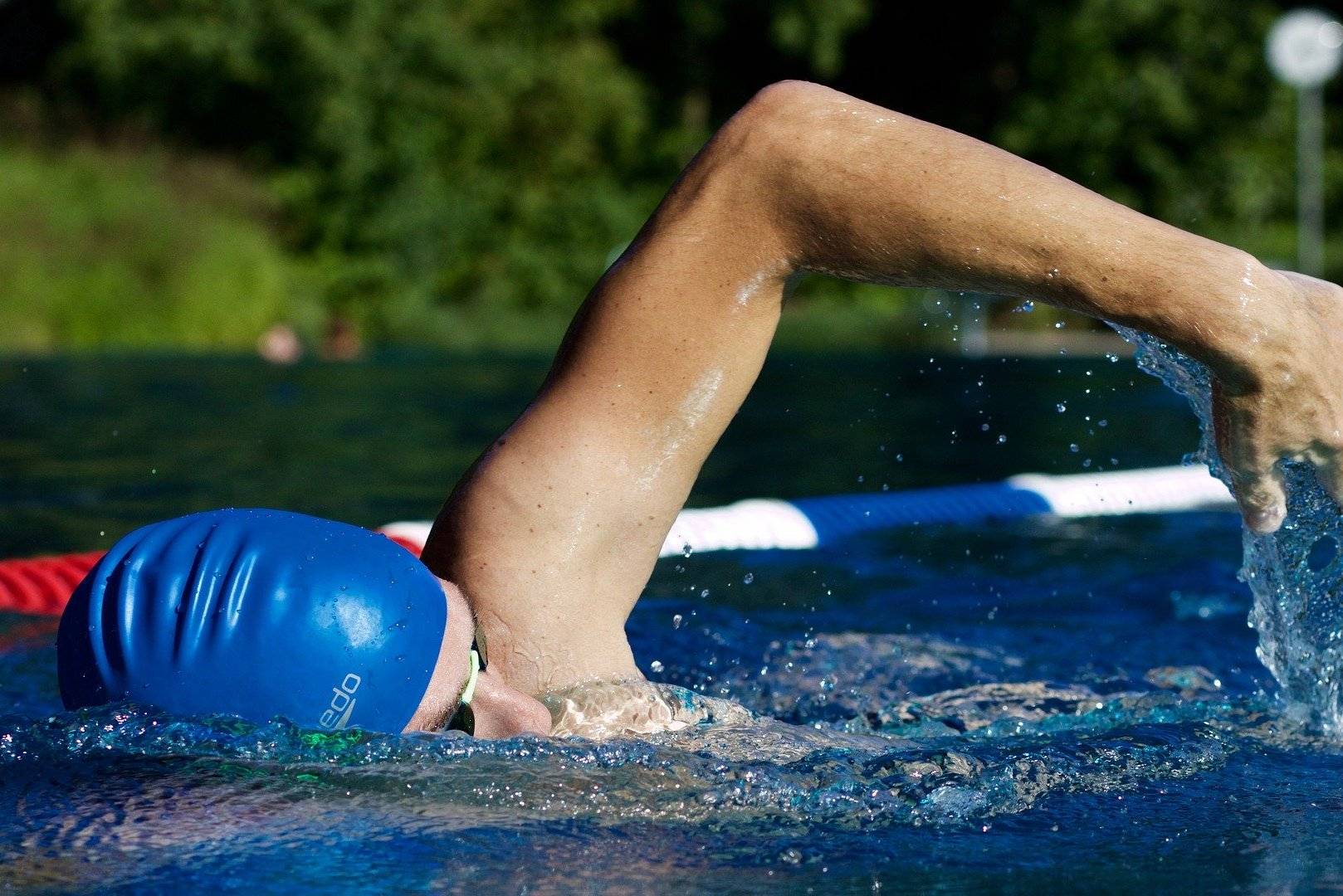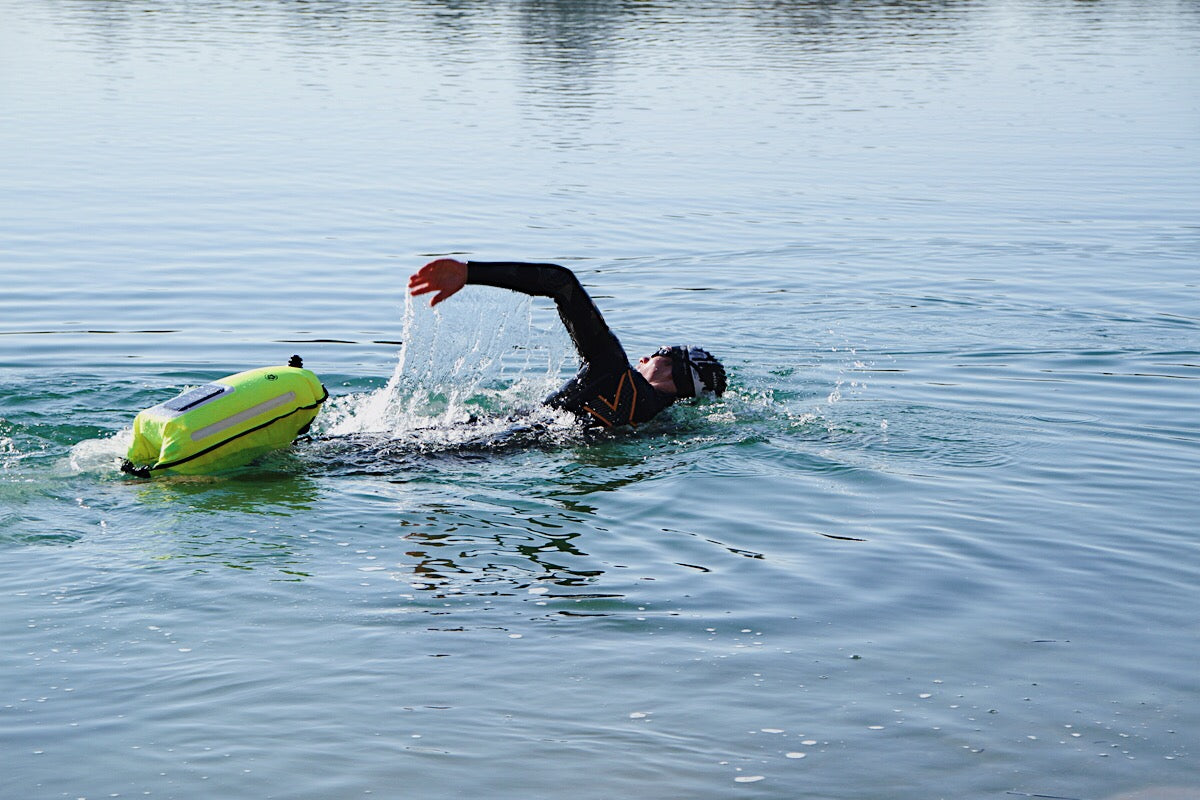Many triathlon beginners are particularly afraid of the first competition discipline - swimming. Getting started with correct technique training is not that difficult. To show you that, our swimming expert Annette Gasper has put together ten tips in this article that you can use to get a good crawl technique, even as a beginner.
However, it is important that you do not try to take all points into account at the same time, but always concentrate fully on one exercise in order to carry it out perfectly.
Tip 1 - Water location
In the water, the flatter you lie in the water, the better. This reduces the water resistance and the locomotion is significantly more energy-saving.
Exercise: Push yourself off the pool wall and just try to slide for as long as possible. The more streamlined you lie in the water, the further you will get.
Tip 2 - Head position
The correct position in the water is very much influenced by the position of the head. If you constantly look forward, your legs will drop behind you. Instead, focus your gaze on the pelvic floor, just slightly forward. This gives you the best position in the water. The lack of a forward view is not a problem in the pool, as you can use the guidelines on the pool floor for orientation and a field of view of approx. 2m ahead is sufficient to prevent collisions.
Tip 3 - Close your eyes
Again, it's all about the water level. Swim on a lane that is as free as possible with your eyes closed, without lifting your head again and again to see what is in front of you. This increases the time in the shallower swimming position and at the same time trains orientation in open water.
Tip 4 - Breathing
That you breathe in over water and out under water sounds logical. However, when doing the crawl, it is particularly important to actually carry out and complete the exhalation under water. If you hold your breath and only exhale when you lift your head out of the water, you have less time to inhale enough air.
Exercise: Stand in the water and simulate breathing while crawling.
Tip 5 - Breathe shallowly
The average lung volume is around 4L. With one breath on land we transport about 0.8l into the lungs, which is also enough for freestyle swimming. Be careful not to breathe too frantically and quickly, as shallow breathing can bring a lot of calm to your swim workout.
Also interesting:
Tip 6 - Take momentum with you
Although it sounds like cheating at first: Feel free to push yourself off the edge of the pool and start straight away with a loose leg kick. Even if you don't have a wall to push off in the lake, it improves your feel for the water, which is beneficial for competition.
Tip 7 - Swimming without breathing
Sometimes it's hard to focus on everything at once. So after pushing off, try swimming a few strokes without breathing. Concentrate fully on your technique and take a short break to catch your breath.
Tip 8 - Kick
Sure, you need your legs in the other two disciplines too. However, a relaxed leg kick costs little energy and improves the position in the water significantly.
Exercise: Try to levitate vertically in deep water and keep your head above the water. This leg kick intensity is also sufficient in competition to improve the position in the water.
Tip 9 - Count your moves
If you've never counted how many arm strokes you need to do 50 meters, you should do that in your next training session. About 20 moves on a 25m track is a good guideline (50m track about 40-45 moves). If you need significantly more, try to let your arm lie and slide longer.
Exercise: Swim 8 x 50 meters, doing one less arm stroke each time.
Tip 10 - create a balance
No matter how well you swim, after too much exertion your technique will deteriorate. Therefore, always include two lengths of breaststroke (because breathing is easier there) or backstroke (breathing is always possible) in the training. The variety allows you to regenerate faster and you can work effectively on your crawl technique earlier.
Finally, don't worry if everything doesn't work out at first. The learning effect increases as the exercises are repeated. However, always focus on one exercise. The important thing is: in order to make constant progress, you have to go into the water at least twice, but better three times a week.
Find the right swimming goggles
A huge selection of swimming goggles for indoor and open water.




















